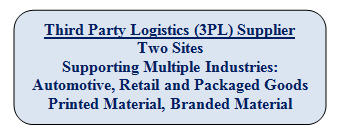WHO: A company that specializes in warehousing products and fulfilling orders for other companies as a Third Party Logistics (3PL) company.
CHALLENGE: This organization sought a warehouse solution that provided a robust option for addressing their picking and packing operations and could improve order throughput. The existing environment used paper-based picking process which limited the volume of orders that could be accurately processed in an 8-hour shift. Additionally, inventory management processes were also conducted manually. This left a disconnect between when items were counted to when they were entered into their inventory system, resulting in frequently inaccurate inventory records.
SOLUTION: Given their business growth and a need to expand to a second facility, they had to leverage automation to control costs. They were looking for a strong, commercially available Warehouse Management Solution (WMS) application with a proven track record for 3PL operations. HighJump’s Warehouse Advantage (WA) was chosen as the core of their solution. Its flexible architecture provided a method for communication with their legacy Order Management Systems and the flexibility for migration to the replacement solution coming in 2018.
RESULTS: The key to a successful solution transition is the ability to continue to conduct “business as usual” while minimizing the impact of any disruption. This client’s transition from manual to WMS was met with only minor technical and training issues, allowing the teams to quickly focus on improvement opportunities that can only be identified when used in production. The entire solution, including the post “go-live” enhancements, was implemented in production just prior to their busiest season. This WMS solution effort resulted in: 1) increased visibility of product inventory and warehouse tasks and 2) real-time information available for management decisions.
After the busy season, they began loading data to support their second facility. This location will not require any system modifications and the training that they’ve received enables them to conduct this effort on their own.




